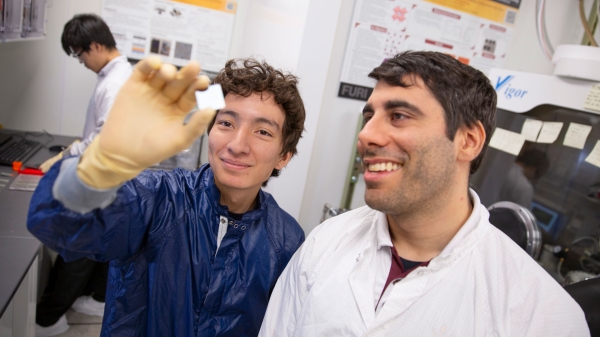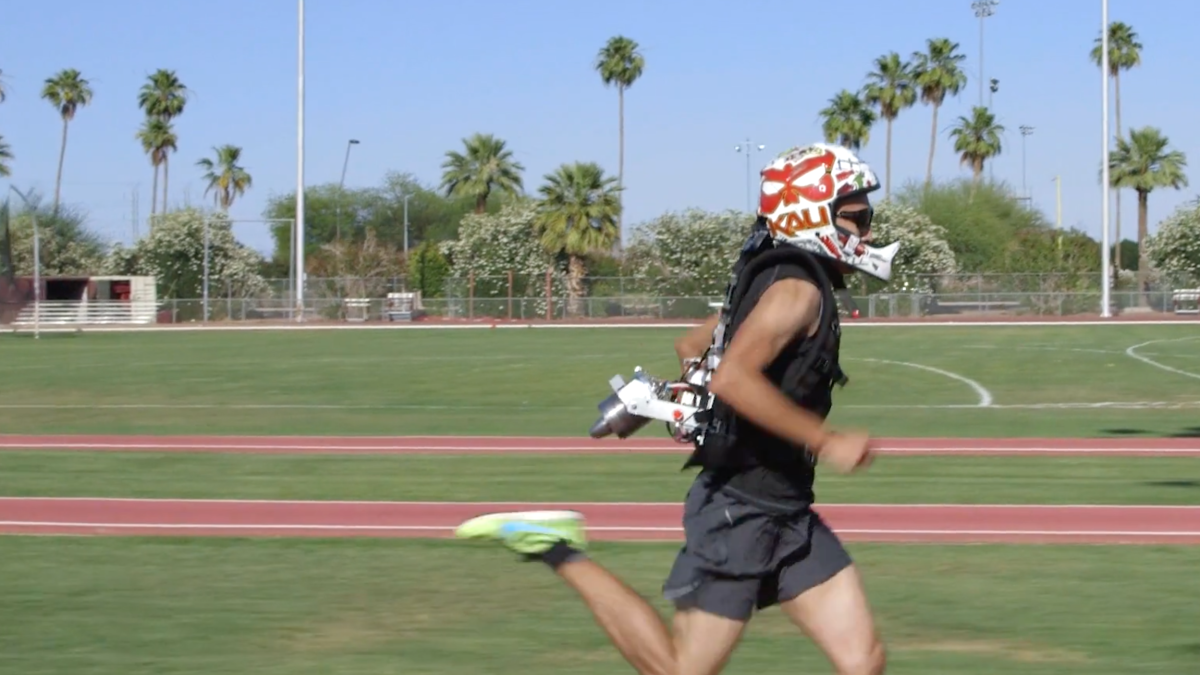A jet pack designed by an Arizona State University engineer with “a touch of Wile E. Coyote in him,” according to Sports Illustrated, has been updated to be lighter and better suited for use in extreme sports.
Jason Kerestes, robotics engineer with The Boeing Company, says he was able to “eliminate quite a bit of the weight that was on the original version” by getting rid of the aluminum and plastic framing.
Wearing the new, waist-mounted version, a bicycle rider on a test run was able to increase the top speed from 39 mph to 53 mph, and a rider on a long skateboard got up to 32 mph, Kerestes said.
The jet pack gained attention two years ago when a demonstration video circulated, featuring a runner on a track wearing a backpack-style prototype. Media outlets including Sports Illustrated and Gizmodo picked up the story, explaining the original goal of increasing the running speed of U.S. Army soldiers.
“The military gets the coolest toys first,” Gizmodo wrote.
“Lookout, Road Runner!” the Sports Illustrated headline touted.
Kerestes, who studied mechanical engineering as a master’s student at ASU, said that aside from making his jet pack smaller and framing it with carbon fiber, he’s been working on new technology with medical potential.
“I’m working on designing a new exoskeleton called REST-Exo, for robotic exoskeletal support technology, to help people that have trouble standing,” he said, mentioning people with knee or ankle injuries. He wants to be able to help them “get back up and walk.”
“Anything’s possible.”
More Science and technology

ASU researcher part of team discovering ways to fight drug-resistant bacteria
A new study published in the Science Advances journal featuring Arizona State University researchers has found vulnerabilities in certain strains of bacteria that are antibiotic resistant, just…

ASU student researchers get early, hands-on experience in engineering research
Using computer science to aid endangered species reintroduction, enhance software engineering education and improve semiconductor material performance are just some of the ways Arizona State…

ASU professor honored with prestigious award for being a cybersecurity trailblazer
At first, he thought it was a drill.On Sept. 11, 2001, Gail-Joon Ahn sat in a conference room in Fort Meade, Maryland. The cybersecurity researcher was part of a group that had been invited…
